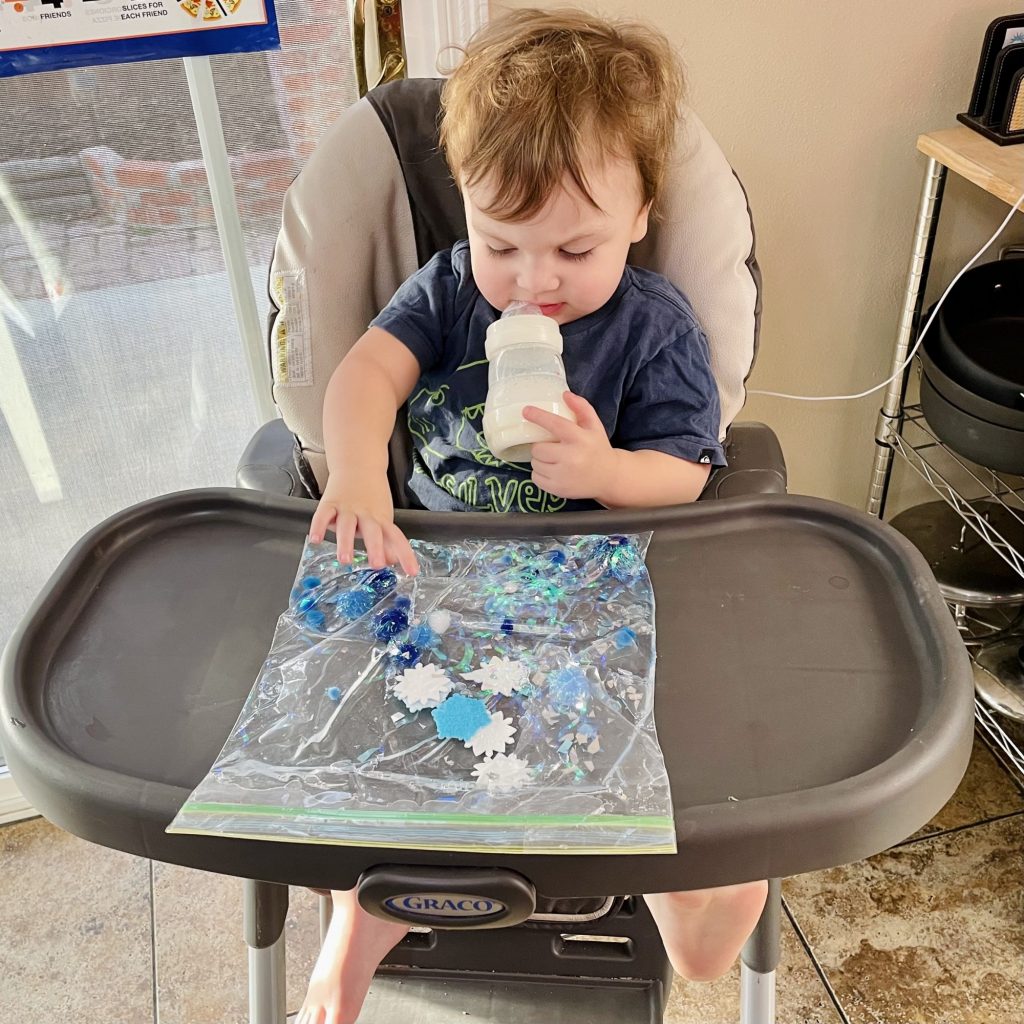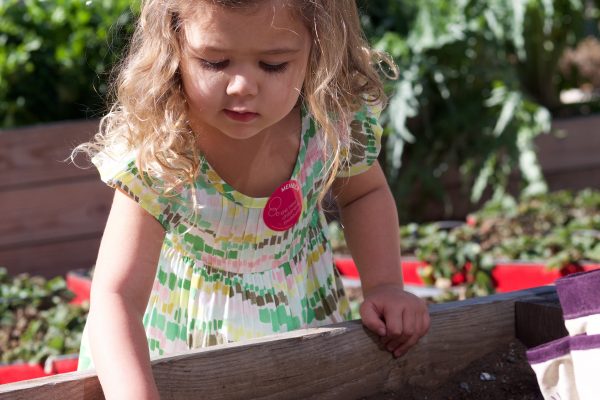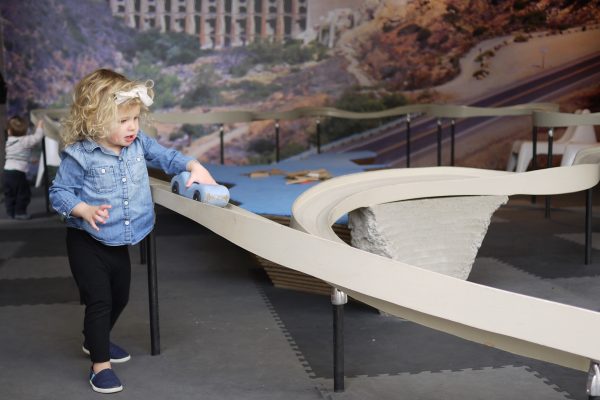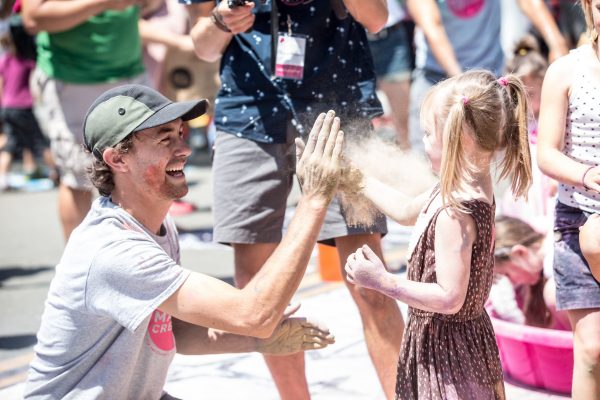As part of our ScholarShare 529 Toddler Time at Home program, create a winter sensory bag that your little one can squish, draw and fully explore with their hands! All you need is a Ziploc bag, liquid and seasonal craft supplies, and there’s no clean up afterwards! Toddlers and preschoolers can play and use fine motor skills to enjoy this fun and calming project.
Winter Sensory Bag Tutorial
AGE: 18+ months (with adult support)
TIME FRAME: 30 min
SUPPLIES:
- Gallon-sized Ziploc bag
- Various winter or holiday-themed craft supplies – e.g. pom-pom balls, foam shapes, cotton balls, confetti, tinsel, etc.
- 1 Container of clear hair gel (use water as an alternative)
- Roll of packing or duct tape
- Permanent marker (optional)
directions
1. Draw a picture. If doing this project with a preschooler (ages 3 – 5 years), first have them select a winter/festive picture (e.g. Christmas tree, snowman, snowflake, etc.) to include on the top of their bag. Let them draw an outline of their picture or draw it for them on top of the bag using a permanent marker. Then, lay the craft supplies for putting in the bag out on a table in different containers and let your preschooler pick and choose materials to place into the bag. For a toddler (ages 12 months – 2 years), you can create the bag for them but describe to them what you are putting in it.
2. Fill the bag with liquid. After filling the bag with materials, fill it with the entire bottle of clear hair gel or approximately 2 cups of water. Remove the excess air and seal the bag tightly. If giving this sensory bag to a toddler who is still mouthing objects, tape the top shut to secure it.
3. Play time! Invite your preschooler or toddler to play with their sensory bag – flat on the table or on a highchair tray or in the air – to watch the materials and liquid pool together. Note: It is recommended to stay with your toddler at all times while they are playing with this sensory bag.
Tips:
- Preschoolers may enjoy the calming effects of playing with the bag and can also manipulate the materials around in the bag to explore ways of filling in their picture.
- Toddlers may be more interested in pushing the shapes around with their fingers and exploring the cause and effect of squishing and manipulating the bag.
- Pop the sensory bag into the refrigerator for a “cool” hands-on experience.
Toddler to Transitional Kindergarten Learning Connections
Early learners (ages 12 months – 5 years) enjoy activities that allow them to get creative and physical at the same time. These activities are also a way for early learners to use their powers of observation, to explore process and to test outcomes. To further increase the learning opportunities while making winter sensory bags together, consider incorporating one or more of the ideas below.
Tis the Season
Experiment with different themes for your sensory bags and create them all year long. Invite your preschoolers to brainstorm with you as you consider different ideas for your topics and the materials that you can include or go on a hunt together at the store or your house for items that you’d like to use!
Explore Together
Play alongside your toddler and demonstrate for them how to push the objects around in the bag and talk about what they see and feel. For preschoolers, encourage their inventiveness in how they use the bag and explore with it and encourage them to talk about the choices they make along the way.
Share a Story!
Reading is a wonderful vehicle for learning and for introducing new ideas to early learners. Select any engaging and age-appropriate books that explore winter themes. Read them together with your child before or after the winter sensory bag activity.
Recommended Related Reading (Ages 12 months – 5 years):
- Snow by Uri Shulevitz
- The Snowy Day by Ezra Jack Keats
- Touch and Feel Winter by Scholastic and Scholastic Early Learners
Preschool Learning Foundations Standards (Visual Arts and Social Emotional Learning)
Age 48 months:
- Notice and communicate about objects or forms that appear in art.
- Make straight and curved marks and lines; begin to draw rough circle shapes.
- Enjoy learning and are confident in their abilities to make new discoveries although may not persist at solving difficult problems.
Age 60 months
- Begin to plan art and show increasing interest and persistence in completing it.
- Draw single circle and add lines to create representations of people and things.
- Communicate about elements appearing in art (such as line, texture or perspective), and describe how objects are positioned in the artwork.




